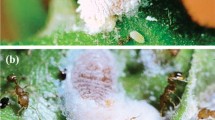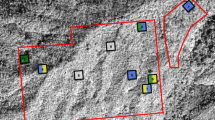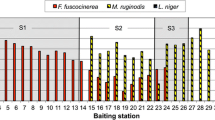Summary:
In the tropical peat swamp forests of South-East Asia, the ant-plant Macaranga puncticulata is specifically associated with Camponotus (Colobopsis) sp. 1 (Formicidae: Formicinae), a member of the C. saundersi-group. This ant shows a variety of adaptations to its plant-bound mode of life. The queens are capable of locating young M. puncticulata plants inside the forest and of chewing entrance holes into the domatia by themselves. C. (Colobopsis) sp.1 nests were found exclusively inside the domatia of M. puncticulata. The diet consisted predominantly of host plant resources (food bodies and extrafloral nectar), but insect prey were taken too. In contrast to all the other obligate ant associates of Macaranga, C. (Colobopsis) sp.1 never cultivated any scale insects. Nevertheless, tending Homoptera ("trophobiosis") is indeed included in the behavioral repertoire, but the ants showed this capacity only in experiments in which the host plants had been completely deprived of extrafloral nectaries. Large C. (Colobopsis) sp.1 colonies are polydomous and can extend over up to 20 M. puncticulata trees. There is strong intraspecific competition for host plants during several stages of the colony development. We observed conspicuous pushing fights between queens that tried to found colonies on the same young plant. C. (Colobopsis) sp. 1 workers were capable of removing water from flooded domatium chambers. They quickly gathered around fresh injuries to M. puncticulata. Herbivorous insects were fiercely attacked and either driven away from the plant or captured as prey. Moreover, workers often pruned vines that came into contact with their host trees. We could show that colonization by C. (Colobopsis) sp. 1 is beneficial for M. puncticulata, since the ants effectively reduced herbivory and plant competition.
Similar content being viewed by others
Author information
Authors and Affiliations
Additional information
Received 14 October 1996; revised 30 July 1997; accepted 5 August 1997.
Rights and permissions
About this article
Cite this article
Federle, W., Maschwitz, U. & Fiala, B. The two-partner ant-plant system of Camponotus (Colobopsis) sp. 1 and Macaranga puncticulata (Euphorbiaceae): natural history of the exceptional ant partner. Insectes soc. 45, 1–16 (1998). https://doi.org/10.1007/s000400050064
Issue Date:
DOI: https://doi.org/10.1007/s000400050064




